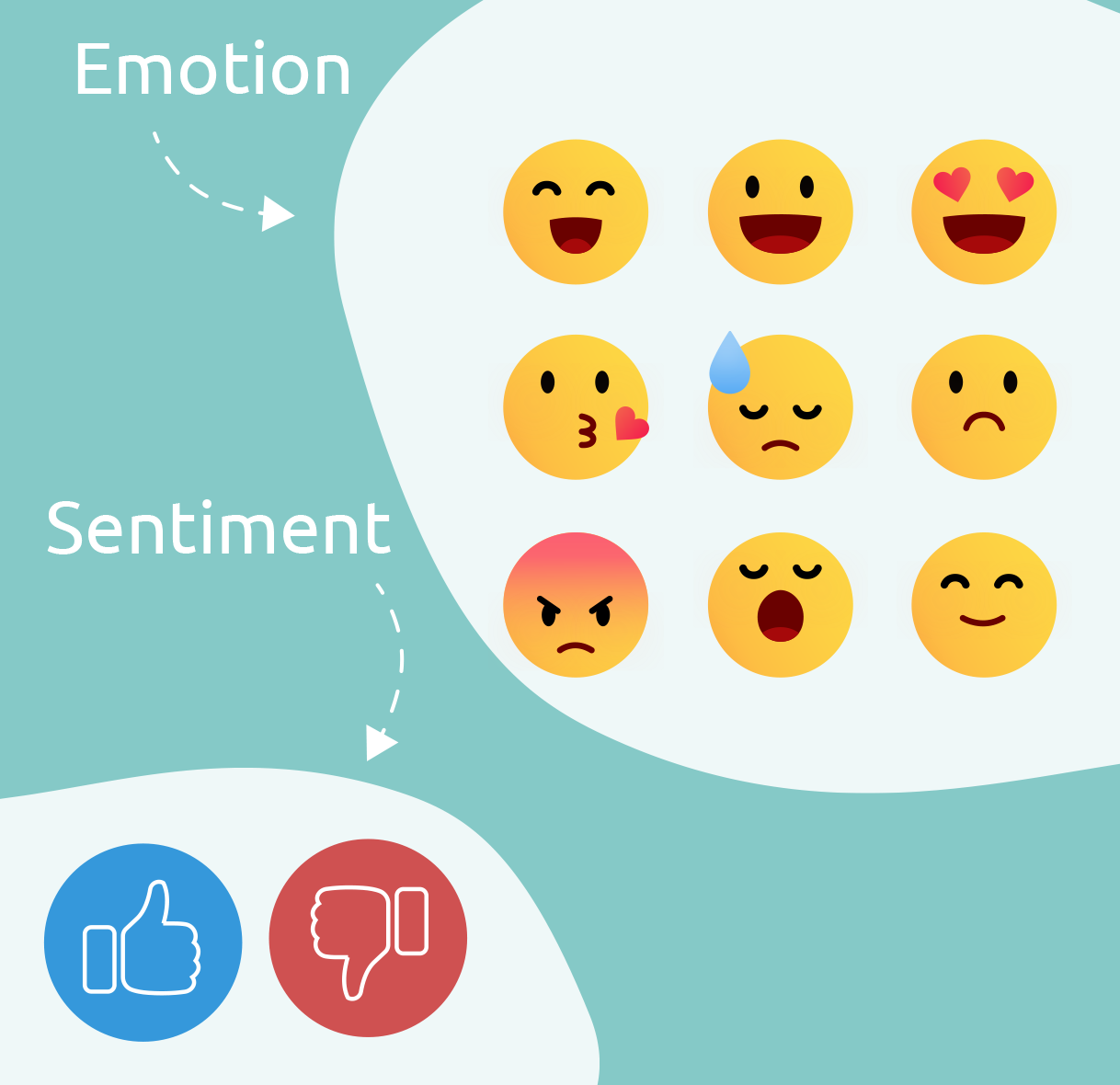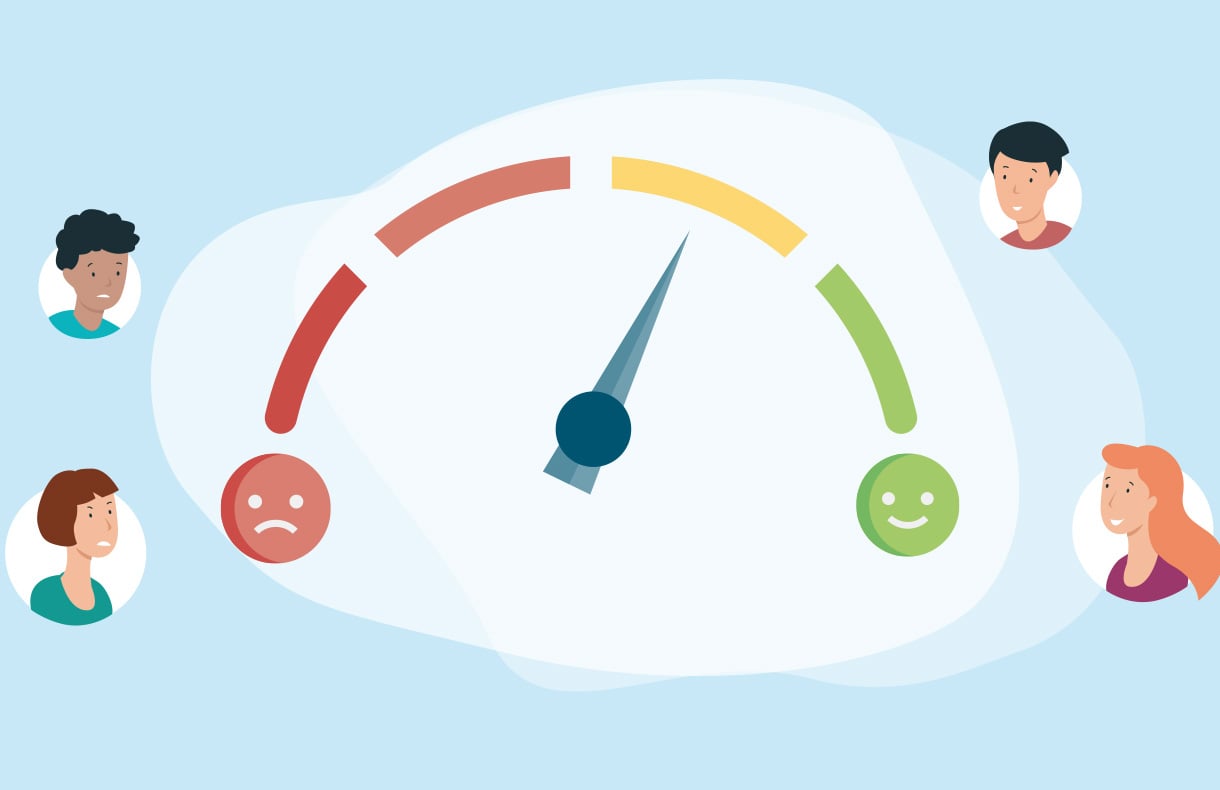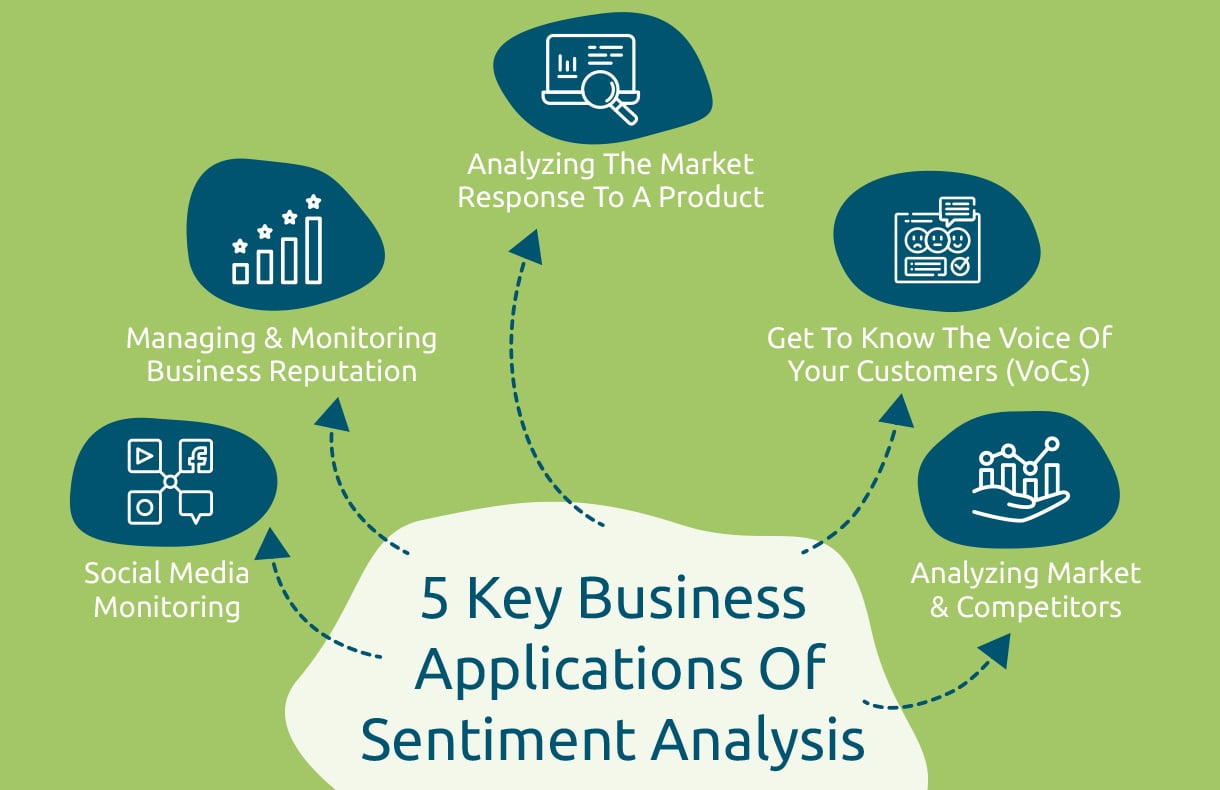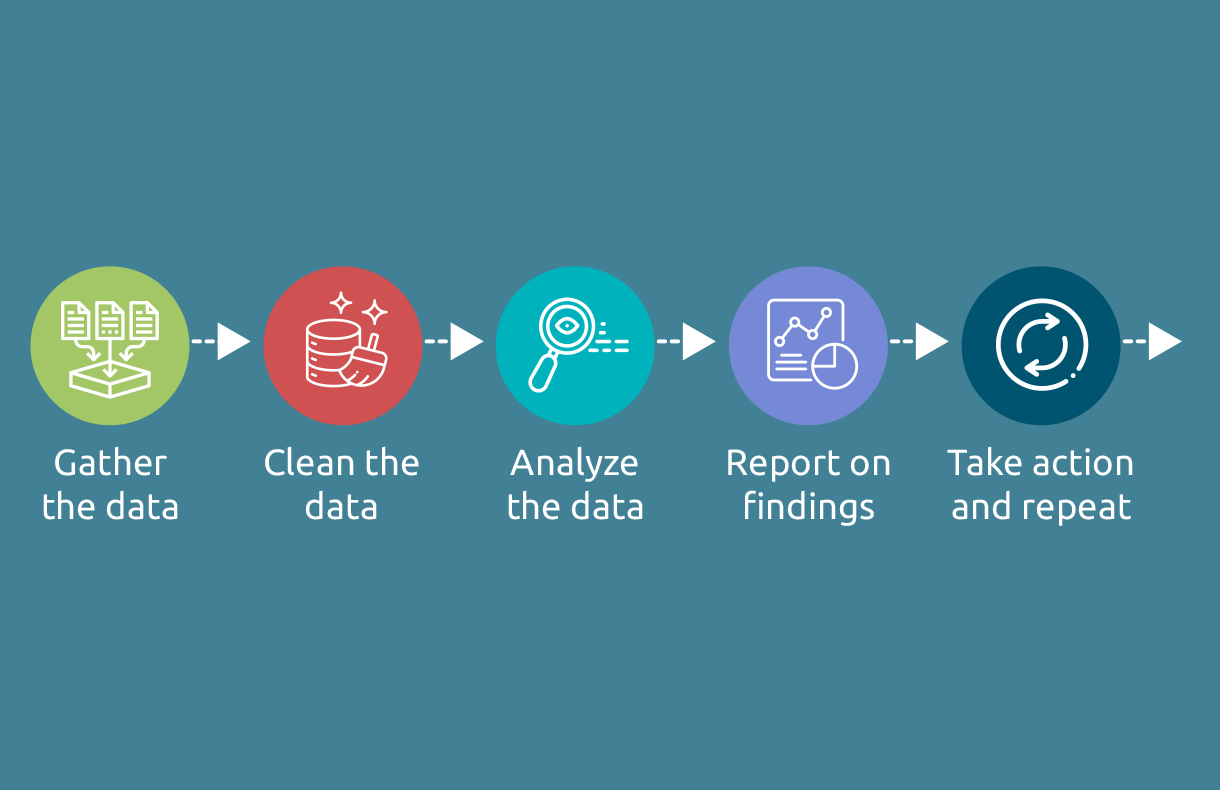Decode What Your Customers Really Want With Sentiment Analysis And Opinion Mining

Decode emotions, drive success
In today's digitally interconnected world, where opinions are freely shared and discussions occur across various online platforms, understanding customers' sentiments has become crucial for businesses to thrive in competitive markets.
Sentiment analysis is a natural language processing (NLP) technique that involves the use of computational algorithms to determine and understand the sentiment or emotional tone expressed in texts.
The main goal of sentiment analysis is to identify whether the expressed sentiment is positive, negative, neutral, or sometimes more nuanced (e.g., strongly positive or mildly negative).
What can you achieve through sentiment analysis?
- Sentiment analysis helps you dive deep into the unspoken language of your customers and decode their sentiments.
- It extracts valuable insights from customers’ feedback, reviews, and social media interactions. Understand their desires, anticipate their needs, and forge stronger connections.
- You can stay one step ahead, make data-driven decisions, and create exceptional experiences that resonate with your customers' hearts and minds.
The depths of opinion mining
- Emotion detection sentiment analysis helps understand the emotions conveyed in various types of text data, such as customer reviews, social media posts, and more.
Example: "Wow! I can't believe I won the competition! I'm over the moon with joy! "
Emotion detection result: Happiness/Excitement - Aspect-based sentiment analysis is a more specialized form of sentiment analysis that focuses on identifying and analyzing sentiments or opinions expressed towards specific aspects or features of a product or service.
Let's use a restaurant review as an example: "The food at the restaurant was delicious, but the service was slow, and the ambiance was a bit noisy.“
Result of aspect-based sentiment analysis:
Food: Positive sentiment
Service: Negative sentiment
Ambiance: Neutral to negative sentiment - Intent-based sentiment analysis is an advanced form of sentiment analysis that combines the analysis of sentiment with the identification of the intent behind a piece of text.
For example, consider the following sentence: "Despite the initial challenges, the customer service team promptly resolved my issue. I'm impressed with their dedication."
With intent-based sentiment analysis, the system would not only recognize the overall sentiment, which in this case is positive, but also the underlying intent, which is to praise the customer service team for their dedication in resolving the issue despite the initial challenges.

Importance of sentiment analysis
Emotions are the foundation of strong and enduring relationships. Be it with friends, family, or customers; emotions can bring people together.
Consumers undergo a variety of emotions when dealing with brands. They could be delight, excitement, happiness, joy, sadness, frustration, and anger. To capture their emotions, sentiment analysis comes into the picture.
Sentiment analysis helps brand managers and entrepreneurs understand how consumers feel and what they want from your organization. It is an excellent indicator to determine what your target customers think about your company and its products or services.
To know how sentiment analysis can immensely help set new standards in customer service, read this blog article.

Customer sentiment analysis: where data becomes emotion, and insights pave the way to exceptional experiences…

Your FAQs, answered
Can sentiment analysis handle multilingual data?
Yes, sentiment analysis can be extended to handle multilingual data. There are models designed to support multiple languages, allowing businesses to analyze sentiments expressed in various languages across global markets.
Can sentiment analysis be used for real-time customer support?
Yes, sentiment analysis can be integrated into real-time customer support systems to prioritize and respond to customer queries based on their sentiment. It allows companies to address negative sentiments promptly and deliver better customer experiences.
How accurate are sentiment analysis models?
Sentiment analysis models can achieve high accuracy for standard language and well-structured data, often surpassing 90% on benchmark datasets, accurately identifying positive, negative, and neutral sentiments in various contexts.
However, challenges persist in dealing with informal language, sarcasm, irony, and domain-specific jargon, which can affect the accuracy of sentiment analysis in specific scenarios.
Leverage sentiment analysis for better CX
Vast amounts of written information are produced and published every moment. Sifting through all the information or textual data is extremely time-consuming. Using manual processes is also insufficient to identify and integrate data on brand sentiment, whether it comes from surveys, social media, online forums, or elsewhere.
This situation calls for Sentiment Analysis, also known as Opinion Mining, that can extract valuable customer insights and be applied to different business functions. It empowers businesses with valuable insights into customer behavior, market trends, and brand perception, enabling data-driven decision-making and enhancing overall business performance.

From data to actionable insights
Methods to extract insights from customer data and understand their opinions and attitudes toward a product, brand, or service. Let’s see how it works.
1. Data Collection: Gather customer data from various sources such as social media, customer feedback forms, surveys, and online reviews. This data should include text-based inputs such as comments, reviews, and feedback that express customer sentiment.
2. Data Processing: Clean and prepare the collected data for analysis. This step involves removing irrelevant information and inconsistencies, which may include tasks like removing special characters, converting text to lowercase, removing stop words, and applying tokenization to break the text into individual words or phrases.
3. Sentiment Analysis: Apply sentiment analysis techniques to classify the sentiment expressed in the processed data. Common approaches include using pre-built sentiment lexicons, machine learning algorithms, or deep learning models. These techniques aim to determine whether the sentiment expressed in each text is positive, negative, or neutral.
4. Sentiment Aggregation: Aggregate the sentiment analysis results to obtain an overall sentiment score. This step involves combining the sentiment scores from individual customer interactions to calculate an average sentiment or sentiment distribution. It helps in understanding the general sentiment toward a product, brand, or service.
5. Interpretation and Action: Analyze the aggregated sentiment results and draw insights to inform decision-making. For example, understand the sentiment trends, identify areas of strength and improvement, and take appropriate actions based on the findings. This step can involve optimizing marketing strategies, improving product features, or enhancing customer service to align with customer sentiment and preferences.

Sentiment analysis is creating buzz in the business world
Curious to know what your customers really think about your brand? Sentiment analysis can help you dive deep into the minds of your audience, uncovering their emotions, opinions, and preferences. Watch this video to dive deep into sentiment analysis and know how it works.
Please accept marketing-cookies to watch this video.
Benefits of opinion mining for a support center
By understanding the sentiments and emotions expressed in textual content, businesses can make informed decisions, improve customer experiences, and stay ahead in a competitive landscape. Additionally, opinion mining also serves several other benefits:
- It allows companies to monitor customer sentiments in real-time, enabling them to respond proactively to potential issues or crises.
- It automatically prioritizes customer support tickets based on sentiment, ensuring that negative or urgent cases receive immediate attention.
- It can provide valuable insights into product and service improvements by analyzing the sentiment of customer feedback.
- It enables organizations to monitor their brand reputation and track public opinion about their products or services on social media, review sites, and other platforms.
- It can be used to compare brand sentiment against competitors, understanding how customers perceive their brand relative to others.
How to collect data
Collecting data for sentiment analysis involves gathering text-based information that contains opinions, emotions, or sentiments expressed by users or customers.
You can pull data from:
- Social Media
- Product Reviews
- Customer Support Interactions
- Surveys Information
- Feedback Forms
- Forums and Discussion Boards
- Call Center Transcripts
- Chatbot Interactions
- News Articles/Blogs


